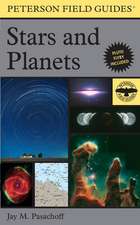Innovation in Astronomy Education
Editat de Jay M. Pasachoff, Rosa M. Ros, Naomi Pasachoffen Limba Engleză Paperback – 16 ian 2013
Toate formatele și edițiile
| Toate formatele și edițiile | Preț | Express |
|---|---|---|
| Paperback (1) | 424.00 lei 6-8 săpt. | |
| Cambridge University Press – 16 ian 2013 | 424.00 lei 6-8 săpt. | |
| Hardback (1) | 898.16 lei 6-8 săpt. | |
| Cambridge University Press – 23 iul 2008 | 898.16 lei 6-8 săpt. |
Preț: 424.00 lei
Nou
Puncte Express: 636
Preț estimativ în valută:
81.13€ • 84.54$ • 67.18£
81.13€ • 84.54$ • 67.18£
Carte tipărită la comandă
Livrare economică 04-18 aprilie
Preluare comenzi: 021 569.72.76
Specificații
ISBN-13: 9781107412873
ISBN-10: 1107412870
Pagini: 350
Dimensiuni: 170 x 244 x 18 mm
Greutate: 0.56 kg
Editura: Cambridge University Press
Colecția Cambridge University Press
Locul publicării:New York, United States
ISBN-10: 1107412870
Pagini: 350
Dimensiuni: 170 x 244 x 18 mm
Greutate: 0.56 kg
Editura: Cambridge University Press
Colecția Cambridge University Press
Locul publicării:New York, United States
Cuprins
Preface; Part I. General Strategies for Effective Teaching: Introduction; 1. Main objectives of SpS2; 2. Learning astronomy by doing astronomy; 3. Hands-on Universe-Europe; 4. Life on Earth in the atmosphere of the Sun; 5. A model of teaching astronomy to pre-service teachers; 6. How to teach, learn about, and enjoy astronomy; 7. Clickers: a new teaching tool of exceptional promise; 8. Educational opportunities in pro-am collaboration; 9. Teaching history of astronomy to second-year engineering students; 10. Teaching the evolution of stellar and Milky Way concepts through the ages; 11. Educational efforts of the International Astronomical Union; 12. Astronomy in culture; 13. Light pollution: a tool for astronomy education; 14. Astronomy by distance learning; 15. Edible astronomy demonstrations; 16. Amateur astronomers as public outreach partners; 17. Does the Sun rotate around Earth or Earth rotate around the Sun?; 18. Using sounds and sonifications for astronomy outreach; 19. Teaching astronomy and the crisis in science education; 20. Astronomy for all as part of a general education; Poster abstracts; Part II. Connecting Astronomy with the Public: Introduction; 21. A status report from the Division XII working group; 22. Outreach using media; 23. Astronomy podcasting; 24. IAU's communication strategy, hands-on science communication, and the communication of the planet definition discussion; 25. Getting a word in edgeways: the survival of discourse in audiovisual astronomy; 26. Critical evaluation of the new Hall of Astronomy; 27. Revitalizing astronomy teaching through research on student understanding; Poster abstracts; Part III. Effective Use of Instruction and Information Technology: Introduction; 28. ESO's astronomy education program; 29. US student astronomy research and remote observing projects; 30. Global network of autonomous observatories dedicated to student research; 31. Remote telescopes in education: report of an Australian study; 32. Visualizing large astronomical data holdings; Poster abstracts; Part IV. Practical Issues Connected with the Implementation of the 2003 IAU Resolution: Introduction; 33. Stellar evolution for students of Moscow University; 34. Astronomy for everybody: An approach from the CASAO/NAUH view; 35. Toward a new program in astronomy education in secondary schools in Turkey; 36. Universe awareness for young children; 37. Education in Egypt and Egyptian responses to eclipses; 38. Astronomy in the cultural heritage of African societies; 39. Education at the Pierre Auger Observatory: the cinema as a tool in science education; 40. Freshman seminars: interdisciplinary engagements in astronomy; 41. Astronomy for teachers; Poster abstracts; Conclusion.
Recenzii
Reviews from Teaching and Learning Astronomy by Jay M. Pasachoff and John R. Percy: 'What makes this book special is the care that has gone into articulating why astronomy education is important and why it is necessary to better train and support preservice and in-service science teachers. This book is a must-have for anyone working to add astronomy to any curriculum or to persuade funders to invest in science education ... it is a book that will give the experienced astronomy educator some novel activities, new resource lists, and well-argued reasons to introduce astronomy to as many minds as possible.' Astronomy Education Review
'The editors are enthusiastic and prolific writers and this book is a well presented collection of papers, posters and discussions highlighting the importance of astronomy in national curricula from primary to tertiary level. [This is] an in-depth, well argued and persuasive text which I would hope could be essential reading for any with a remit in science education and particularly curriculum advisers and policy makers in national education. For others this is a reassuring read, seeing that internationally the importance of astronomy education is being realised.' Astronomy Now
'The papers present highly interesting accounts of work in progress or critical reviews of past efforts and form a valuable resource of astronomical education. The sectional editorials are full of wisdom and good sense. [The contributors have] provided a service for all who are working to promote and improve astronomical education.' The Observatory
'The editors are enthusiastic and prolific writers and this book is a well presented collection of papers, posters and discussions highlighting the importance of astronomy in national curricula from primary to tertiary level. [This is] an in-depth, well argued and persuasive text which I would hope could be essential reading for any with a remit in science education and particularly curriculum advisers and policy makers in national education. For others this is a reassuring read, seeing that internationally the importance of astronomy education is being realised.' Astronomy Now
'The papers present highly interesting accounts of work in progress or critical reviews of past efforts and form a valuable resource of astronomical education. The sectional editorials are full of wisdom and good sense. [The contributors have] provided a service for all who are working to promote and improve astronomical education.' The Observatory
Descriere
This volume, based on papers presented at a Special Session of the International Astronomical Union in 2006, highlights strategies for effective teaching in astronomy.









